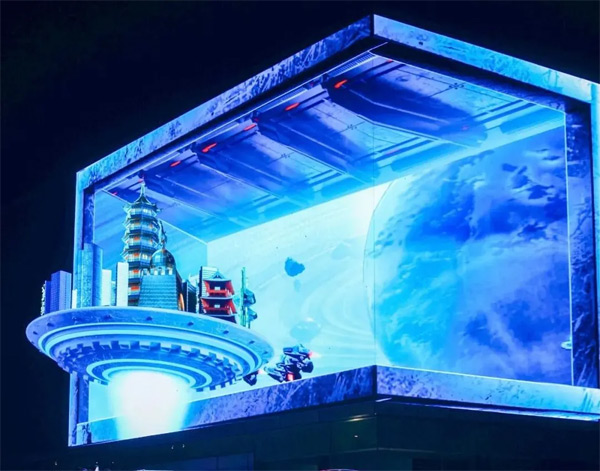There are many friends who are curious about the naked eye 3D videos that have exploded in the circle of friends and short video platforms, whether their screens have any black technology, why will people produce naked eye 3D effects?
In fact, the outdoor naked eye 3D large screen is basically LED display, and it is our common LED display module. However, even LED display, they also have a big difference, today let's talk about the basic knowledge of LED display.

LED display commonly used professional terms
Pixel: Each light emitting unit in an LED display can be individually controlled.
Point spacing: Also known as pixel spacing, the center distance between adjacent pixel points.
Resolution: The number of pixels on the display, there are module resolution, box resolution, screen body resolution.
Angle of view: As the Angle of view changes from left to right or up and down, the brightness drops to half of the maximum brightness and the Angle formed by the normal direction.
Visual distance: nearest, best, maximum visual distance
Brightness: Luminous intensity per unit area in a given direction.
Refresh rate: The rate at which the display screen is updated, usually expressed in Hertz (Hz), usually the higher the refresh, the more stable the image display.
Moire pattern: When the spatial frequency of the pixels of the sensor is close to the spatial frequency of the stripes in the image, a new wavy interference pattern, the so-called moire pattern, may be created.
Gray level: In the same brightness level, the display from the darkest to the brightest between the technical processing level. The higher the gray level, the richer the color display, the more delicate the picture, and the easier it is to show rich details.
Contrast ratio: The ratio of different brightness levels between the brightest white and the darkest black in an image.
Color temperature: indicates the scale of the light color of the light source, the display industry divides the color temperature into warm white, positive white, cold white, of which positive white is 6500K, the larger the value, the colder the value, the warmer the color.
Scanning mode: static scanning and dynamic scanning, from the output foot of the driver IC to the pixel between the implementation of "point-to-point" control called static drive; The "point-to-column" control from the output pin of the driver IC to the pixel point is called the scan driver.
IP rating: The first number represents "dust" and the second number represents "water", such as IP65.
IP stands for Ingress Protection and the first number stands for dust protection class
0: No protection
1: Prevent large solid invasion
2: Prevent the invasion of medium sized solid
3: Prevent small solids from invading
4: Prevent solids larger than 1mm from entering
5: Prevent harmful dust accumulation
6: Completely prevent dust from entering
The second number means waterproof
Waterproofing class
0: No protection
1: Water drops into the shell has no effect
2: Water or rain drops from a 15 degree Angle to the shell has no effect 3: water or rain drops from a 60 degree Angle to the shell has no effect 4: water poured from any Angle has no effect
5: Low pressure injection at any Angle has no effect
6: High-pressure jet water has no effect
7: Can be soaked in a short time (15cm-1m, within half an hour)
8: Soak in water for a long time under certain pressure
The parameters of the LED display are one of the main factors affecting the image imaging effect. Therefore, if you want to get a good viewing effect, you must choose a high-configuration LED display. Of course, the selection of LED display is not the more expensive the better, which is related to the actual situation of the project, such as the ambient light, climatic conditions, waterproof conditions, viewing Angle and so on.
Of course, the selection of LED display is not the more expensive the better, which is related to the actual situation of the project, such as the ambient light, climatic conditions, waterproof conditions, viewing Angle and so on.


